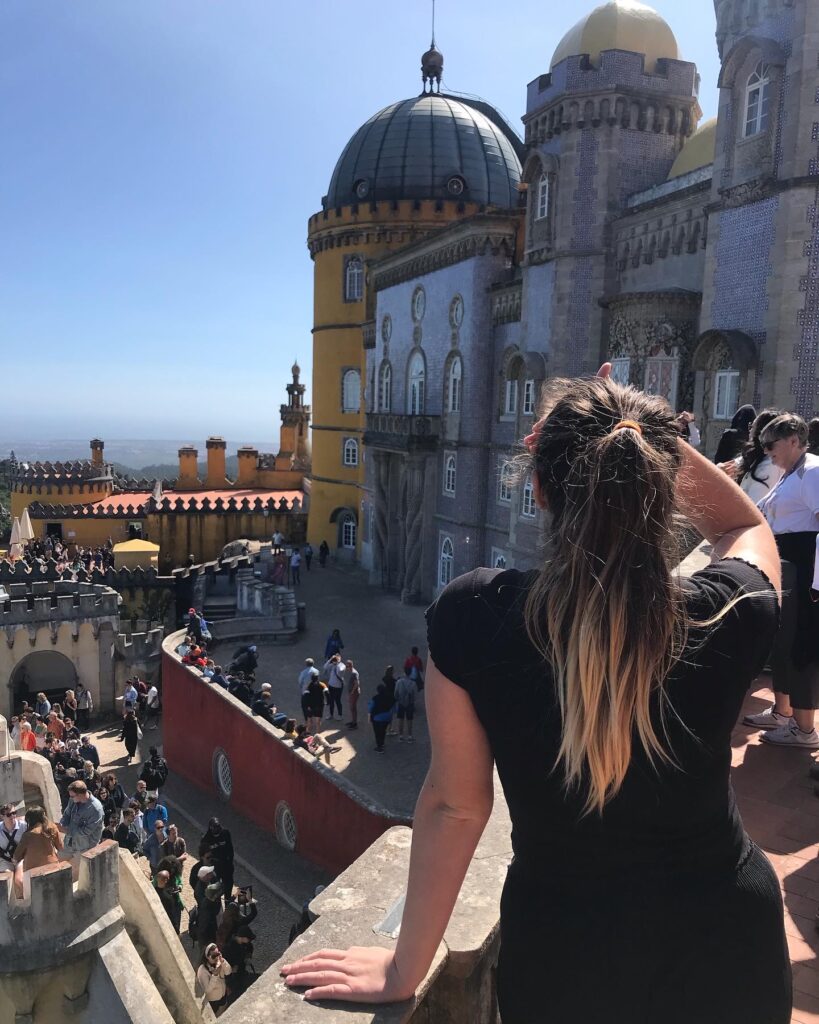We stopped off in Lisbon for a few days on the way home from Brazil. Just like Madrid, Lisbon is a classic European capital with a rich history and high prices. Despite a tight budget and jetlag, we managed to just about do everything we wanted to do in our few days in the city.
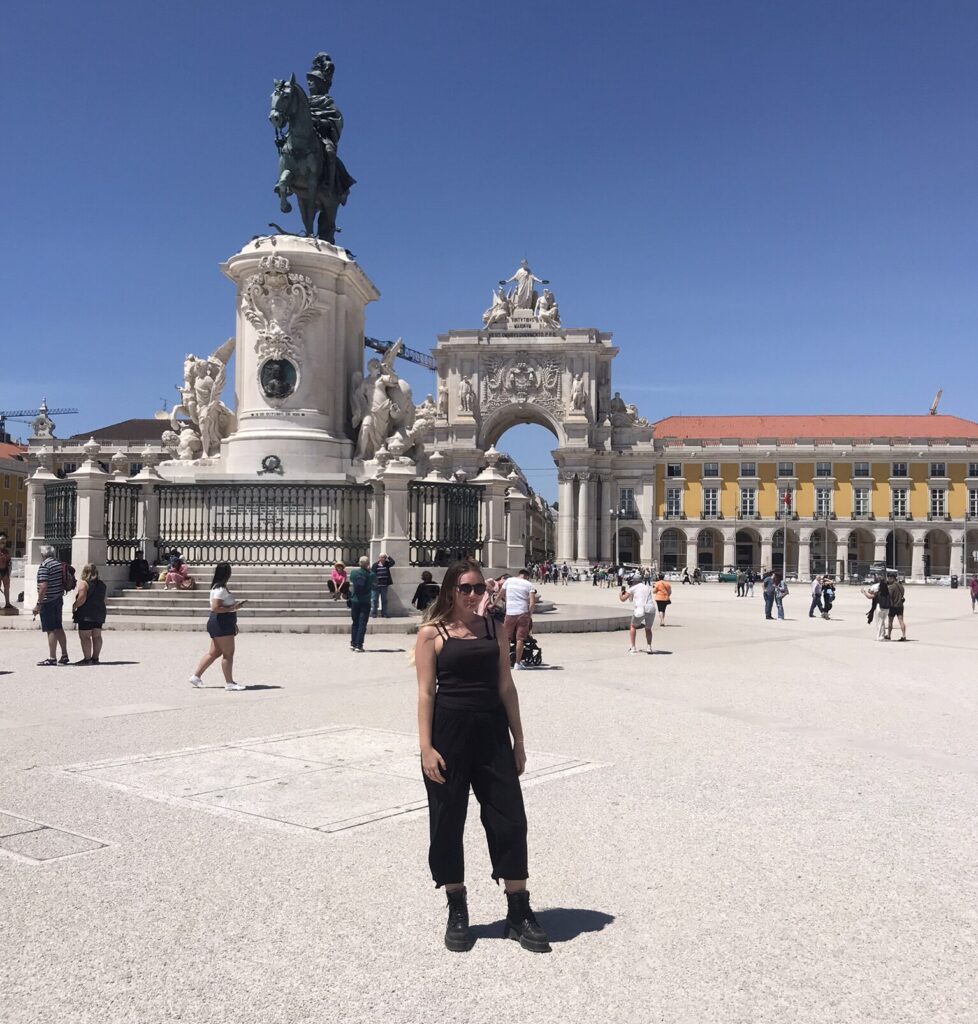
Like many European capitals, we found that the centre of Lisbon is extremely gentrified. Many locals complained about high prices and foreigners buying up property, causing the original residents to depart for cheaper suburbs several miles out of town. It was difficult to find many Portuguese people in the centre of Lisbon, we were shocked at the amount of foreign tourists particularly after being in some less-touristy parts of South America.
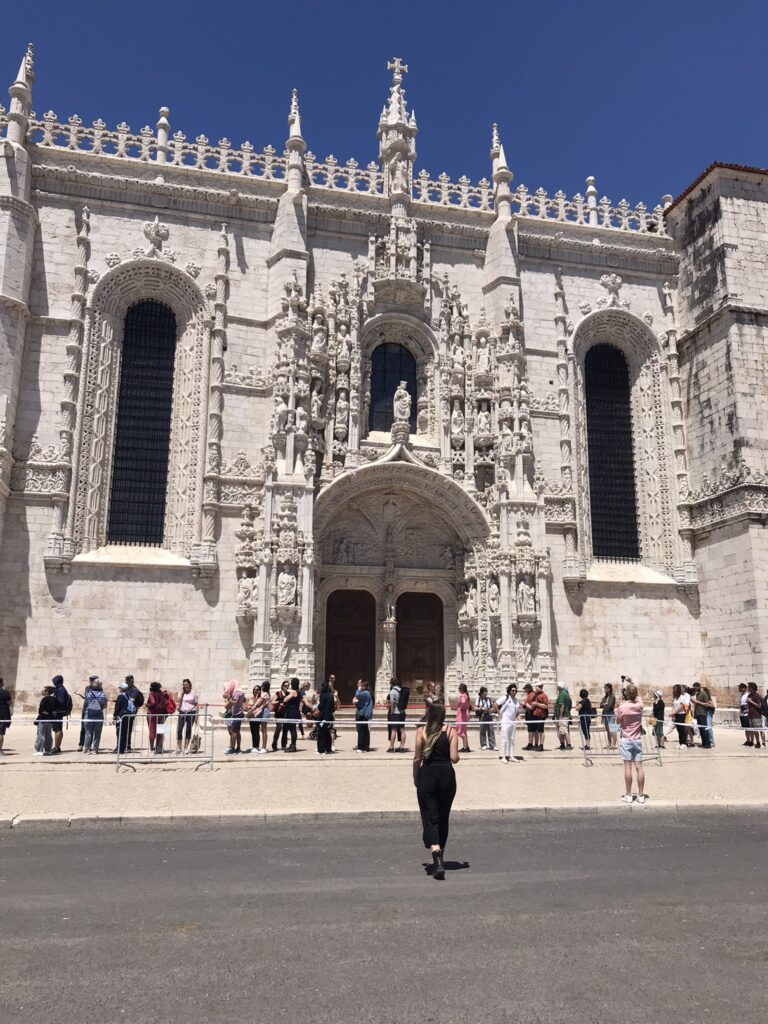
We didn’t bother fighting the queues at Mosteiro dos Jerónimos
Luckily, Lisbon has a cheap and effective metro system which makes it really easy to get around the city. We managed to find a relatively cheap Airbnb in the Arroios neighbourhood and were able to get to all the main sites without too much inconvenience at all.
Lisbon is a port city and most of the main attractions are around the waterfront. We found the waterfront area to be extremely busy and full of tourists. The neighbourhood of Alfama is famed for its pretty houses and Fado music. Nearby Mouraria has an Arabic influence with many intricate tiled buildings. The attraction of Lisbon is obvious and it was understandable that so many tourists want to visit.
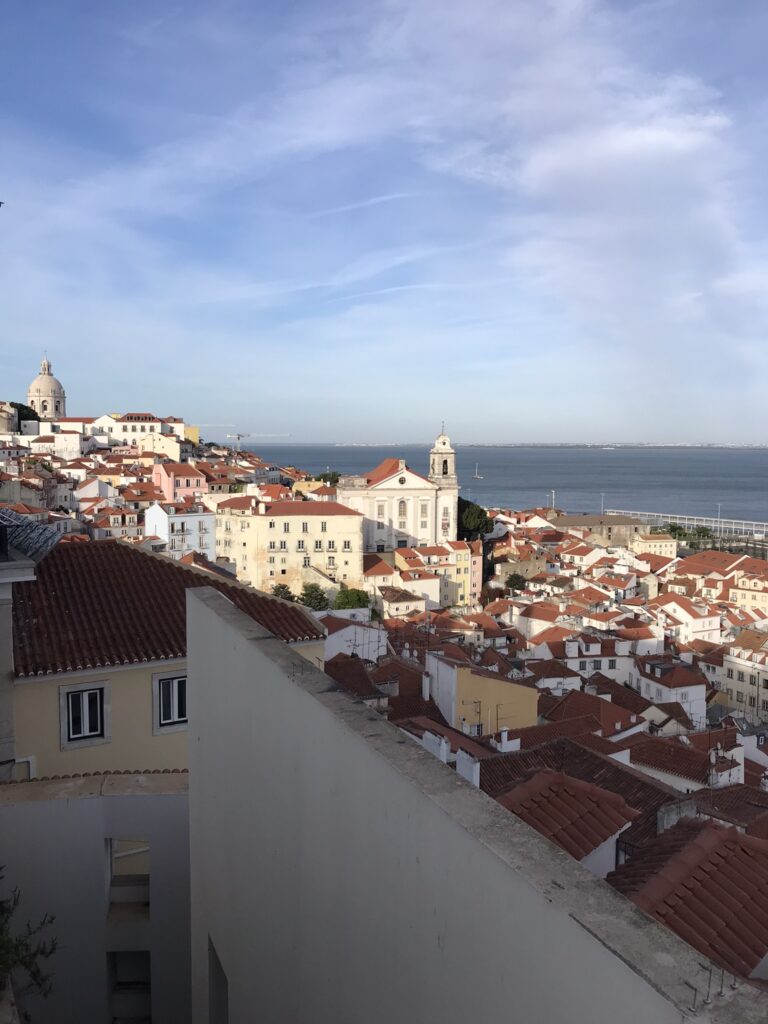
The pretty Alfama neighbourhood retains an old-timey feel
Accommodation
We stayed at an Airbnb in the Arroios neighbourhood. Lisbon can be a very expensive city, we got lucky and were able to find a very nice and clean Airbnb for a good price. Otherwise we would’ve been struggling for decent accommodation given our tight budget. The Airbnb was close to a metro station, making it easy to get around. Don’t be afraid to book somewhere out of town as long as it’s on the metro line.
Foodie Places
Delicia de Arrois – we had to eat out once during our time in Lisbon and this restaurant was within walking distance of our accommodation. They serve traditional Portuguese food with gusto and spirit. The food was excellent and the prices were not too high. We also appreciated the kind and spritely demeanour of the servers.
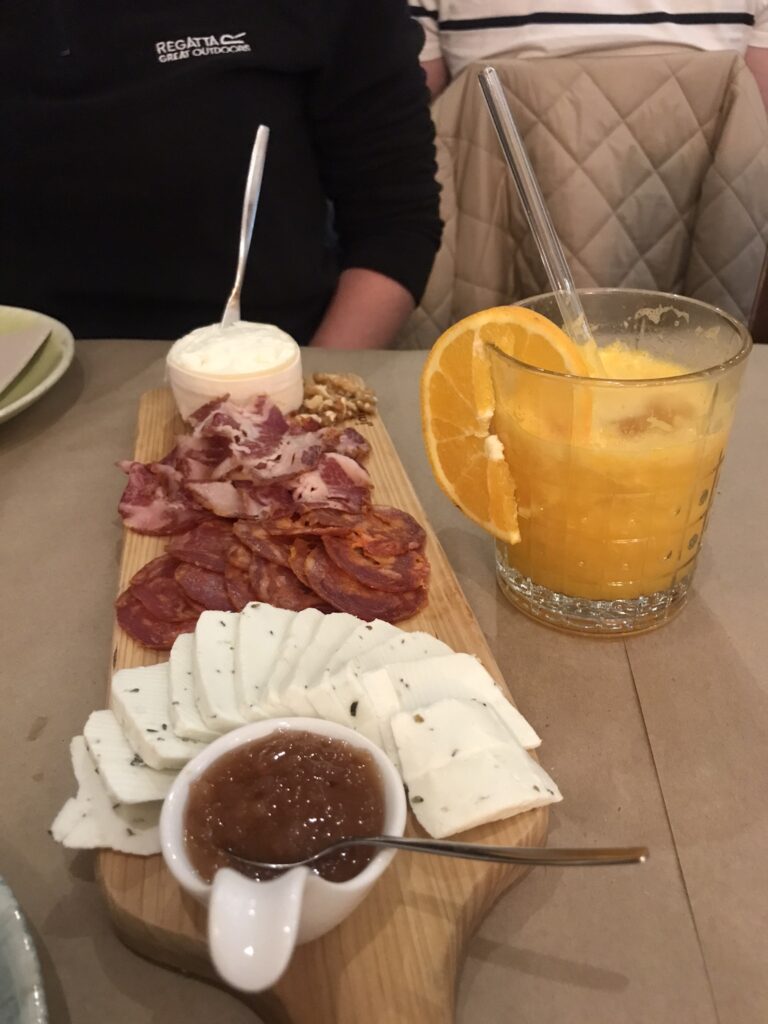
Sampling the delicacies at Delicia de Arrois
Pastéis de Belém – pastel de nata is an institution in Lisbon. The small round custard tart is everywhere. Locals can be quite particular about pastel de nata and some bakeries are renowned throughout the city, Pastéis de Belém being one of them.
Pastelaria Santo António – another place to try pastel de nata, located in the Alfama neighbourhood. We learned that there are competing schools of thought in terms of pastel de nata and rivalries between certain bakeries. It’s good to try a variety!

I couldn’t resist
Continente Bom Dia – because of our tight budget, we mostly shopped at the supermarket for breakfasts, lunches and dinners. Luckily our Airbnb had a kitchen so we could cook for ourselves. Continente Bom Dia was our go-to, although we did sometimes struggle to find anything other than the absolute basics in these shops.
Activities
Guruwalk walking tour of Alfama neighbourhood – starting from the Praça do Comércio, this tour covered most of Lisbon’s central touristic area around Baixa as well as the famous neighbourhoods of Alfama and Mouraria. These are some of the most emblematic areas of Lisbon, checking them out is a must really.
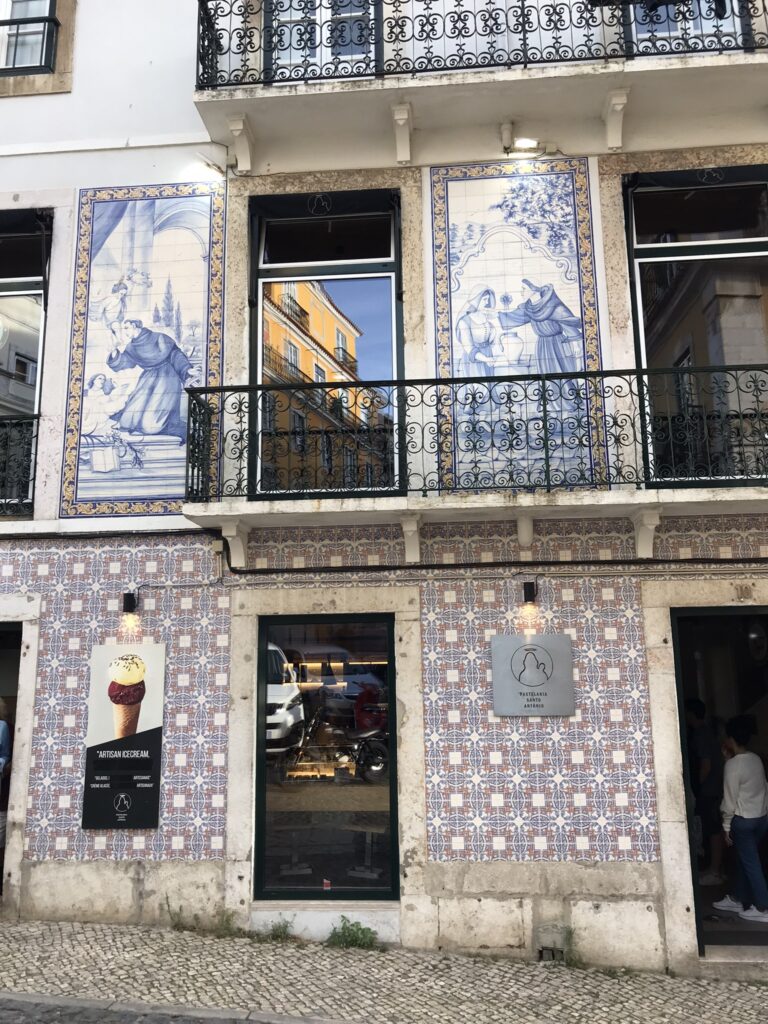
Alfama and Mouraria have many Moorish tiled buildings, including the famous Pastelaria Santo Antonio
Guruwalk walking tour of Belém neighbourhood – the Belém neighbourhood covers the west side of the waterfront area. This district contains the presidential house and landmarks such as the Monument to the Discoveries, Mosteiro dos Jerónimos, Docs do Bom Sucesso and the Tower of Belém. The neighbourhood is associated with seafaring and has strong historical links with Portugal’s storied maritime heritage.
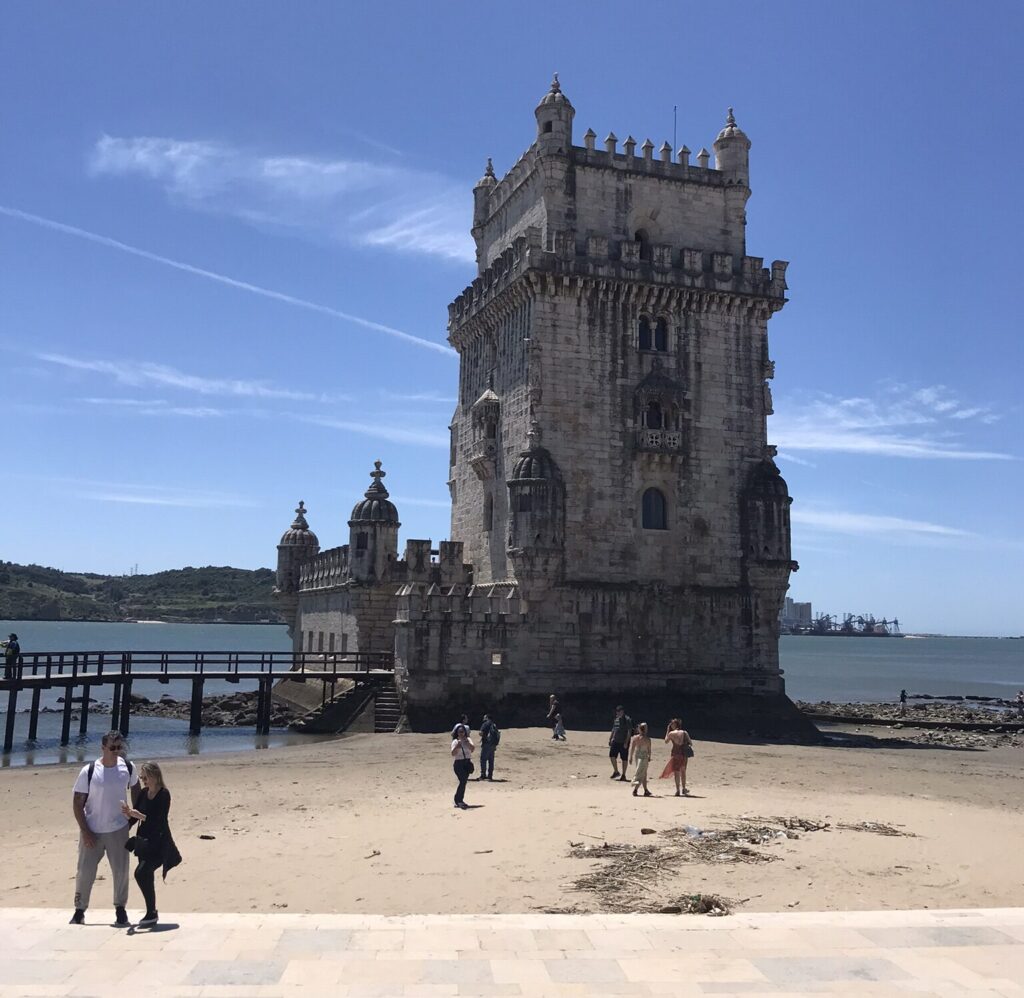
The Tower of Belém, one of many famous landmarks in the Belém area
Museu Calouste Gulbenkian – this museum contains a varied selection of historical art from Asia, Europe and North Africa. The art is from the personal collection of Calouse Gulbenkian, an oil magnate turned philanthropist of Armenian heritage. Gulbenkian donated his wealth to set up a charitable foundation in Lisbon after his death. There is a wide collection on display here with numerous galleries and rooms, even a section focusing on furniture! We thought we’d come to the end of the museum after the furniture section only to find that there was also a traditional painting gallery with works from Rubens and Rembrandt among others.
Sintra
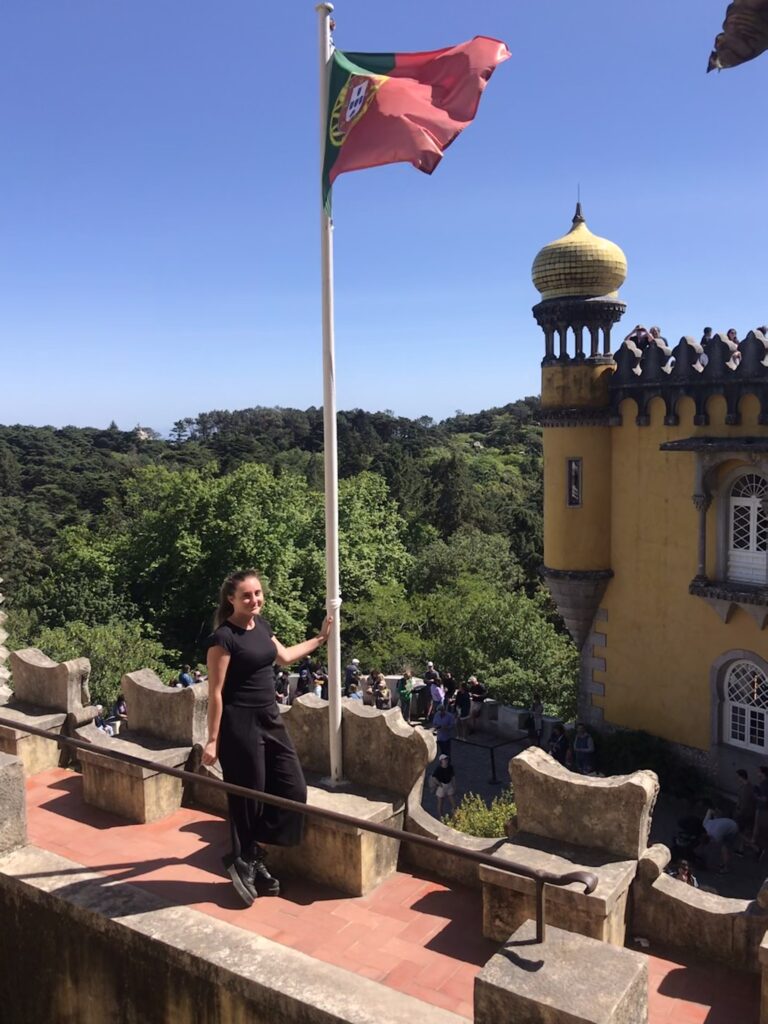
To head to Sintra we took the train from Rossio station in the centre of Lisbon. The train was very easy and cheap. Located about 50 minutes out of Lisbon on the train, Sintra is home to many fairytale-style castles and palaces. With at least four grand palaces, there is so much to see at Sintra that it would realistically be difficult to fit it all into one day.
The Palacio de Pena is the most famous building in Sintra and the main attraction. With its multicoloured facade and prominent turrets, it seems more like something from a children’s fantasy movie than a real palace. In addition, there is also the Moorish Castle, the National Palace and the Quinta da Regaleira, all grand palatial buildings that would be major attractions in their own right.
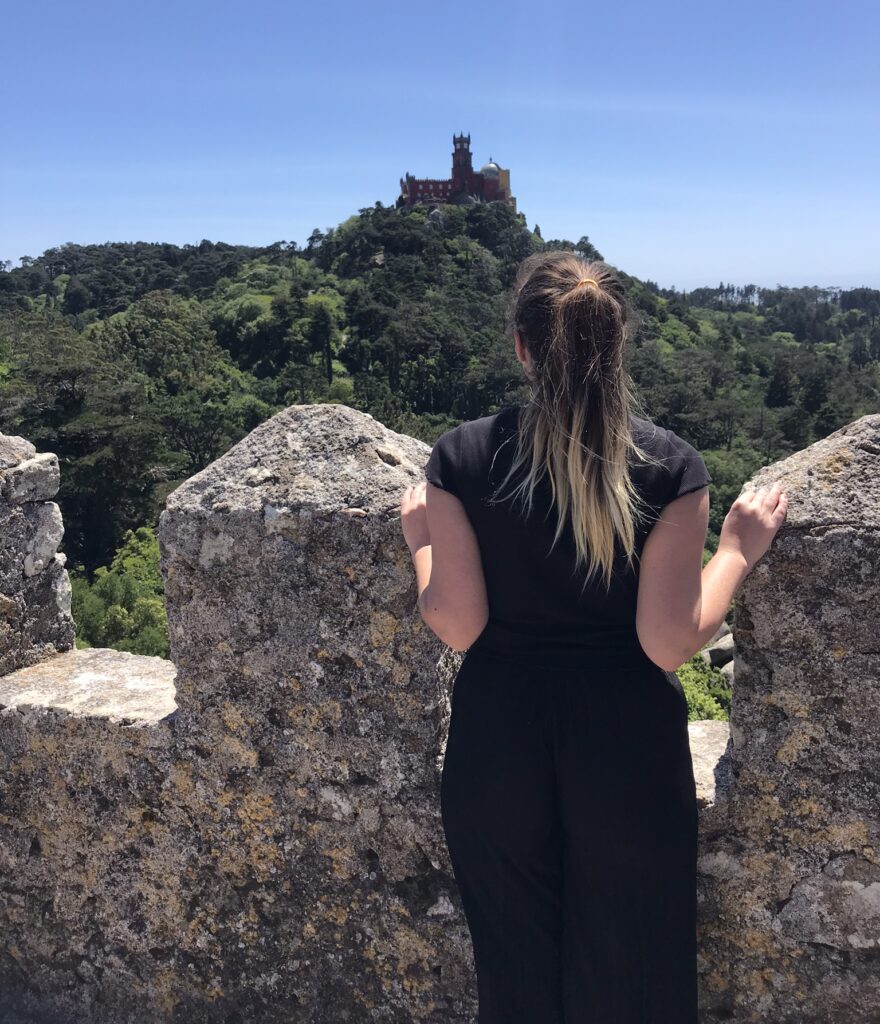
Pena palace as seen from the Moorish Castle
When we got off the train in Sintra, we were immediately hounded by people trying to transport us to the Pena palace. The Palace is located at the top of a very steep hill while the train is right at the bottom. We inquired about a bus but the prices being charged were laughable and extortionate. We decided to walk to the palace, a fairly tough and sweaty uphill walk but we actually arrived before the bus did and saved a significant amount of money (it wasn’t small change..).
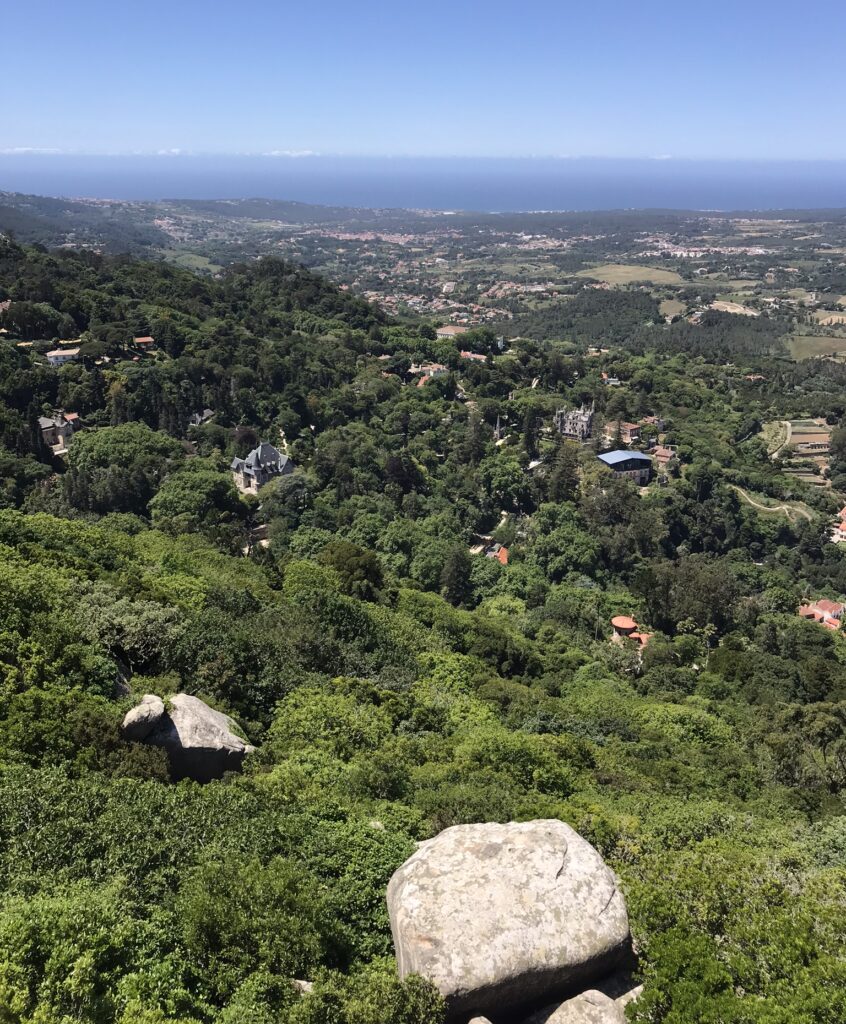
It’s a pretty steep climb to get to Pena palace on foot
Entry into the Pena palace is strictly controlled. It is necessary to queue up at the ticket office first in order to book a ticket for a specific entry timeslot. There was no availability to enter the palace for the next two hours when we arrived. We booked the first available timeslot, which was fine as this gave us a couple of hours to visit the Moorish Castle.
The entrance to the Moorish Castle is quite close to the Pena palace, only a few minutes walk down a small hill. The castle was built during the Muslim period in the 8th and 9th centuries and is well maintained and restored. It really does look like a stereotypical castle. There are fantastic views from the castle turrets across the landscape below. We found that it was really windy atop some of the turrets!
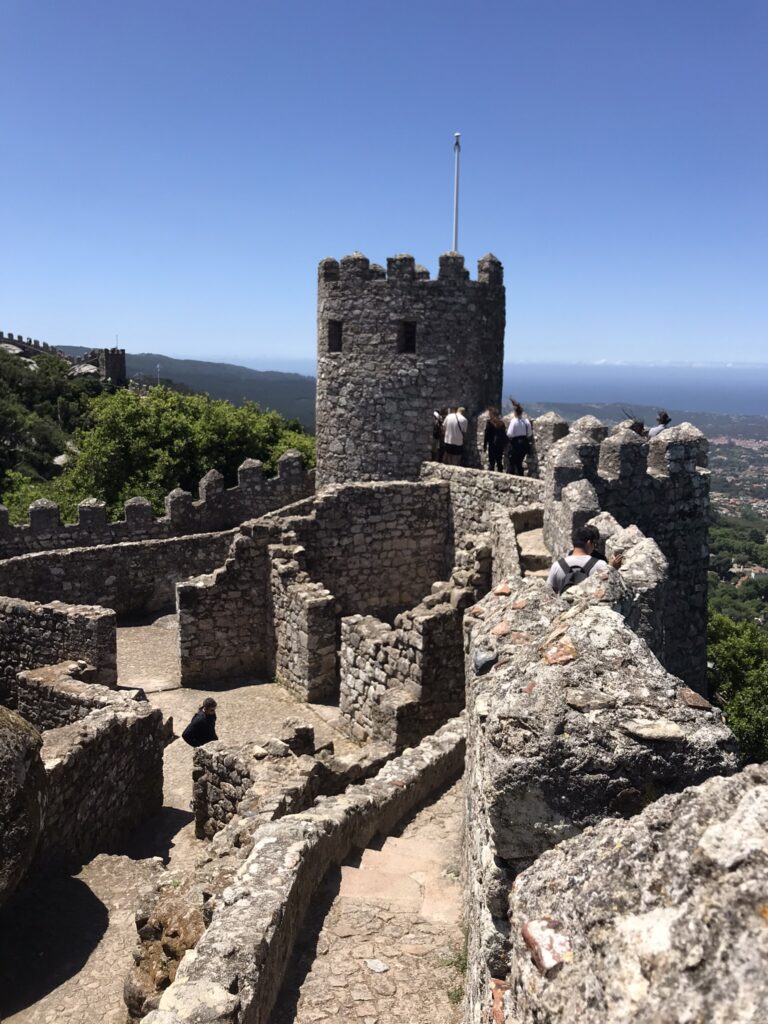
Most definitely a castle
After visiting the Moorish Castle, we headed to the Pena palace. Despite the tight controls on entry, the palace was absolutely rammed with visitors. We basically shuffled in a line through some of the rooms.
There is a set route for visitors to walk through the palace, which takes in most of its rooms and different areas. Many of the rooms are beautiful and ornately decorated. Just as at the Moorish Castle, there are also courtyards with fantastic views all the way to the Atlantic Ocean.
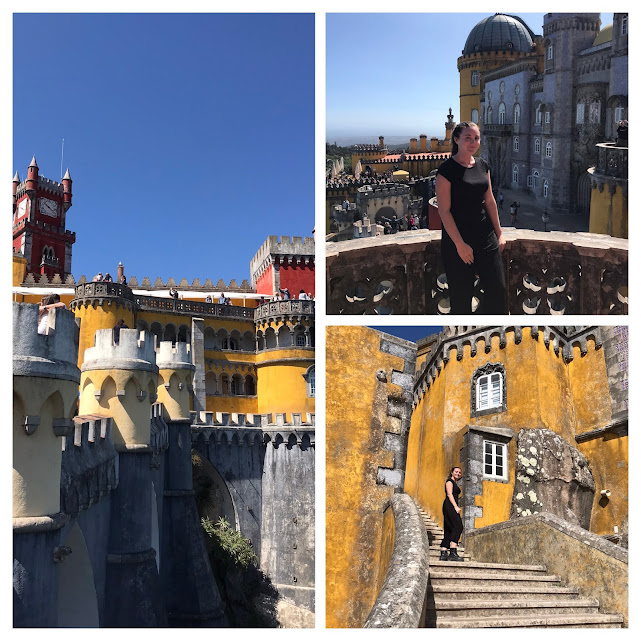
Pena palace looks like something from a storybook
We enjoyed walking down from the palace through the small hillside towns on the way back to Sintra. It felt like an air of tranquillity and authenticity in an otherwise very touristy place.
